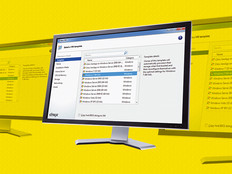The Hypervisor Will Lead the Way to IT Convergence
In medicine, specialists are the way to go. If you have a serious heart problem, you want to see a cardiologist to suss out what’s going on and take decisive action immediately. The rationale behind such thinking is that when people focus on one thing, they become better at it.
But when it comes to machines, the more tasks they can accomplish, the better. Multifunction printers are a lifesaver. They combine what used to take three machines (a scanner, a fax machine and a printer) into one. Similarly, the smartphone has married the portable computer with the cellphone in a way that pretty much no one regrets.
Welcome to the wonderful world of converged IT. On the consumer side, as the MFP and smartphone examples demonstrate, the value of consolidating IT is obvious. On the enterprise side, it gets a little more complicated, but the value is there as well.
In a post on his blog, Chuck Hollis, chief strategist at VMware’s storage and application services business unit, identifies these trends in consumer technology and hypothesizes that the hypervisor will lead to similar converged revolutions in enterprise technology.
As a leader at VMware, Hollis is a believer in the software-defined data center future. VMware President and Chief Operating Officer Carl Eschenbach spoke about the company’s vision for the virtual data center as part of CDW’s Bring IT On leadership series.
“We want to do that abstraction with storage and networking equipment, and then we want to pool resources so it looks like a giant pool of resources that’s highly automated through the use of software,” he said. “VMware’s definition of the software-defined data center: where we deliver all data center infrastructure in a virtualized way as a service.”
Echoing Eschenbach’s vision, Hollis touches on the role that convergence plays in a software-defined infrastructure.
“At the core of SDDC [software-defined data center], there’s the premise that all core infrastructure disciplines [compute, network, storage] are not only potentially implemented in software, but also fully converged,” he writes.
Specifically, the hypervisor is the key to managing and unlocking the value in a converged environment, Hollis posits:
When it comes to software infrastructure convergence, there’s only one place that makes sense to do it — and that’s the hypervisor. It’s become the key layer between the application and the infrastructure, and knows a lot about both.
He takes his idea of a hypervisor-led future even further by asking, “At what point do networking and storage functions simply become a feature of the hypervisor?”
It’s hard to imagine hardware-free enterprise storage and networking, but the reality is that digital and software-driven solutions are steadily gaining steam as time goes on. And products, such as Cisco Meraki’s cloud-based networking controllers, are being deployed to rave reviews from businesses that hail the reduced complexity and increased flexibility.
On the consumer side, we’re already waving goodbye to physical mediums like CDs and DVDs in favor of digital storage, so you can’t rule out a similar transformation on the enterprise networking and storage side.







